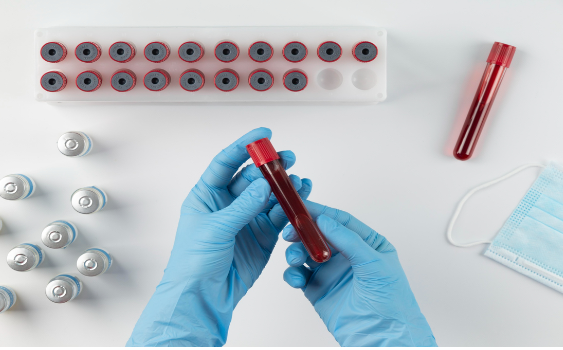“Negative” is the most common blood group found in the world. This negative blood group has a very rare occurrence in India. The doctors in India are trying to make the test more affordable so more people can take the test and be treated sooner.
What is the Rare ‘EMM Negative’ Blood Group?
While some of these blood group variants aren’t rare at all, in reality, they only account for less than 1% of the world’s population. Because of this, when they show up, they make headlines for reasons of interest and novelty. They also bring in a few extra dollars for those hospitals that take blood donations. The rare blood types in general, though, are important because they can influence the success of surgeries, organ transplants, and other medical procedures. It is therefore of utmost importance to understand the differences between the various blood groups and blood variants. There is no evidence of an increased risk of cancer of the cervix, prostate, ovary, breast, colon, rectum, stomach, endometrium, kidney, bladder, or brain among women who carry the rare “negative” blood group. In fact, some studies have shown a lower rate of certain cancers among those who are negative. However, most people have the “positive” blood type.
How to Detect the Rare ‘EMM Negative’ Blood Group?
You have a rare blood group called EMM Negative. Most people don’t know they have it because they don’t have any red blood cells and therefore don’t bleed. EMM Negative people tend to have very low levels of iron in their bodies. However, there is hope! There are special doctors who can perform a treatment called RBC Transfusion that replaces the lost red blood cells with the donor’s own. It helps bring the EMM Negative back to normal and restores the body’s iron levels. Check out this video to learn more about the EMM Negative Blood Group. The EMMs will not work for your project because your blood group has already been determined and you will not change it through a test. The rare blood group is called a Negatif EMM which is the blood group you have if you are type O-Negative. This blood group has not been detected in humans since the 1960s when it was detected in a baby born to a mother who was carrying a Negatif blood group cell and whose pregnancy resulted in spontaneous abortion. A Negatif EMM is found in 2% of the world population. The only known way to obtain a Negatif EMM is to receive a transfusion of Negatif blood.
What are the different types of Blood Groups?
There are six types of negative blood groups. Type A- can’t donate because they have too much type A red blood cells; Type B- can’t donate because they have too much type B red blood cells; Type AB- can’t donate because they have too many type O or type A and B red blood cells; Type O- can’t donate because they have too many type O red blood cells; Type Rh- can’t donate because they have too many type Rh red blood cells; Type R- can’t donate because they have too many type R red blood cells. When you use the rare blood group, you don’t need to know which one you are. There is no need for blood typing to be performed on donors. It is also recommended that you not transfuse someone else’s blood group type.
What is the treatment of the Rare Blood Group?
For patients who have a rare blood group, such as the Kell antigen, there are four main treatments: transfusions, immunosuppressive agents, allogenic bone marrow transplantation, and pharmacologic therapy. Transfusions are usually given to prevent serious complications, such as hemolytic anemia, from developing when red blood cells are destroyed by antibodies. Immunosuppressive agents such as cyclophosphamide and prednisone are used to reduce the production of antibodies that destroy red blood cells. This decreases the number of transfusions that are needed. Allogenic bone marrow transplantation is the final option for patients who have a rare blood type. They receive transplants of donor marrow cells that produce healthy, functioning red blood cells. It’s a very high-risk procedure that requires a lot of time and training to perform successfully. Patients must wait several months for the transplant to complete and they may require a lot of supportive care.





